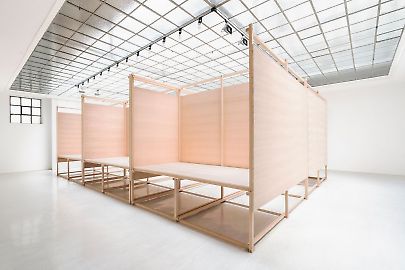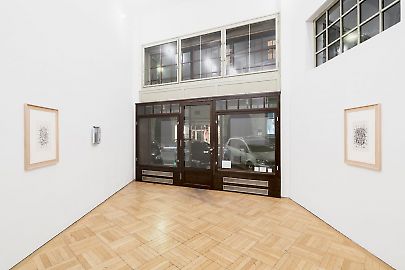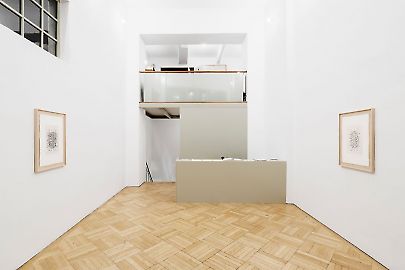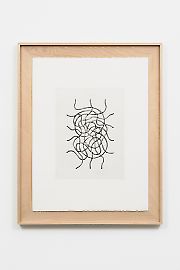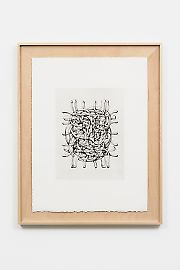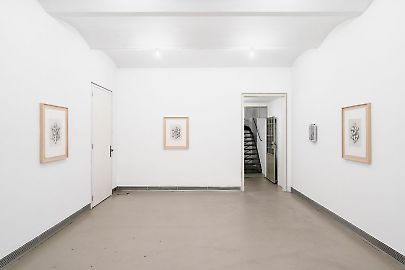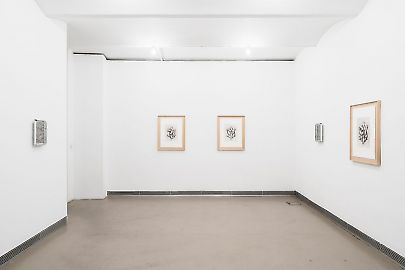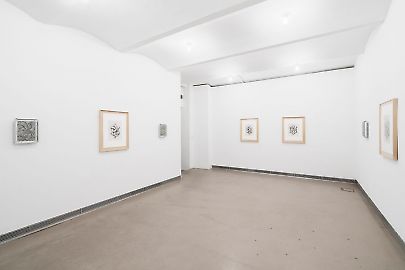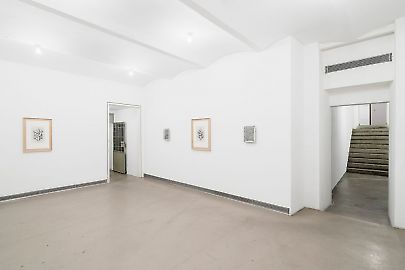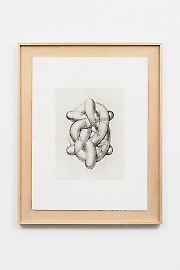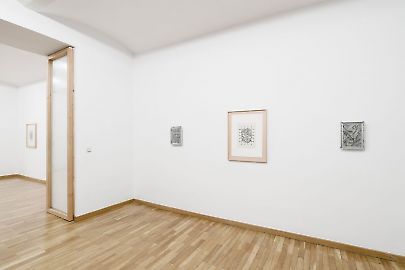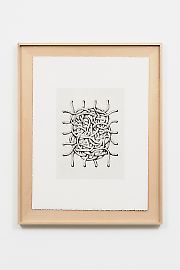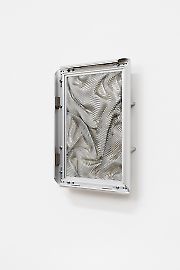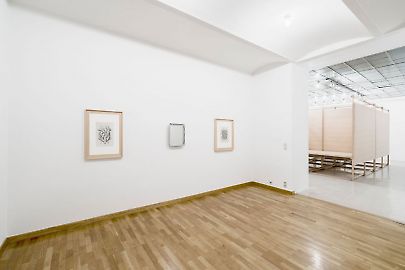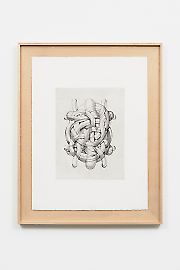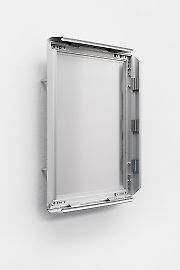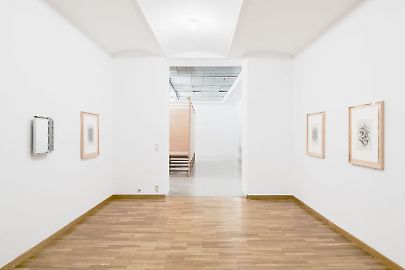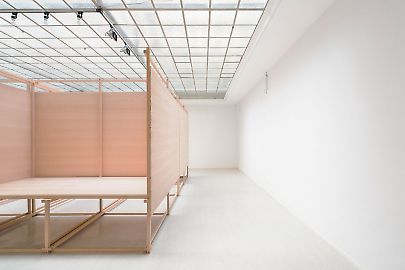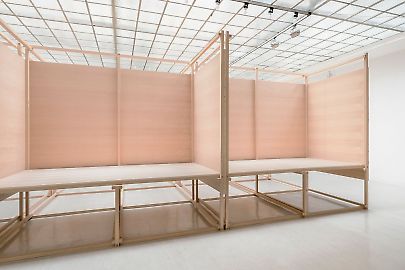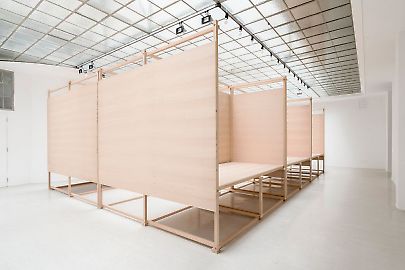Nadim Vardag -- Condition
Opening: March 16, 2023, 6-9pm
Condition—a state of being. But perhaps also: the conditions (not quite the same). The concrete constitution of something, this condition or that one. Or: the conditions that are like this and not different. In this respect, the sober title of Nadim Vardag’s exhibition already entails everything: namely the concrete being of an object in a particular environment, and this also means how this environment, in the sense of a frame, determines that and how something is perceived, for instance, as art (the conditions of reception). Moreover: under which conditions these objects, which one calls art, are created at all (the conditions of production). The conditions always determine the condition. Determine the process and product and stipulate what needs to be done. What is possible and what is not. And how something looks.
In Vardag’s works, these initially invisible states, circumstances, and conditions, these infrastructures of making and showing, which often lead to the fact that one and the same thing can change its character quite radically, repeatedly move from the supposed fringe to the center. They themselves become the content without being completely absorbed by it. Questions of display often move to the foreground, and thus those of reception, the perception of something “as” art. Such as in the modular sculptures made from Egon Eiermann table bases, which Vardag showed at Georg Kargl Fine Arts in 2012: works of art screwed together from so-called design classics and wooden panels, which in turn immediately take a step back into the architectural realm and become room dividers, projection surfaces, or audience stands. Or those metal objects that can also be seen in Condition and that are based on standard, slightly modified aluminum snap frames. The spring hinges of these frames, hung a bit away from the wall in a markedly object-like manner with spacers, are open, so they hold no picture and have no content other than their own frame-like quality. Sometimes mundane aluminum back panels are used, which, in terms of material aesthetics, blend into the frames to the point of unrecognizability, sometimes it is aluminum fabric cast in epoxy resin—which results in a kind of pattern, an “image,” but one that seems to merge with its carrier.
In the central work of the exhibition—an expansive beech wood structure with enormous dimensions—questions about the conditions of production and not least the economy increasingly emerge behind the thematization of the display and thus the conditions of reception. This work (like all pieces in the exhibition: Untitled, 2022/2023) consists of three identical modules. They were originally created in 2022 for the collection show Changes at mumok, not as a work of art, but as a display architecture commissioned by the museum and also paid for as a service, with the exhibits from the mumok collection being shown in the booth-like recesses and on the walls—a completely different form of “work” in other words. Nothing changed on the way from the museum to the gallery, apart from the arrangement and the additional screws with which the three individual elements are now fastened together to form a coherent sculpture. And yet much has happened, since this object has altered its condition: the commissioned work for the museum has now become an independent work of art for the exhibition in the gallery. The determining factors, the conditions under which art is produced (and which usually also means that an artist is accepting a “job” here and there), including the corresponding institutional characteristics, wander into the work, provide it not just with a story, but with a certain attitude towards the circumstances and what they make possible (or impossible).
Vardag’s exhibition Speicher (“Storage”), which was shown in the Berlin exhibition space New Toni in 2021, went the opposite way, so to speak, and could be regarded as a precursor to this work and its dazzling play with diverse circumstances and aggregate states. Made of beech plywood, the modular cubes displayed there are reminiscent of architectural interventions when moved to the wall and of classic minimal art objects when placed freely in the space. After the exhibition ended, these very “art-like,” closed objects, rather than put into storage, were transported to the artist’s apartment, where they now serve as cupboards, with their open sides facing the front. “Stored” in one and the same, ultimately simple object were various possible conditions and uses, as well as certain expectations and projections.
Which brings us to the last group of works that can be seen in Condition. Here, the sometimes confusing complexity that can emerge from a rather direct and pragmatic approach to the conditions and different states once again becomes particularly clear—indeed, to put it another way, this complexity is “represented” in an almost classical manner. We are talking about a series of drypoint etchings with different knot motifs that Vardag has been working on since 2017, and the specific execution and presentation of which is constantly being modified. The motifs of these etchings are always based on a regular grid but connect the individual instances of this grid in various ways—with sometimes thicker, sometimes thinner, sometimes abstruse, then again more comprehensible strands. These works are presented here in frames, designed by the artist, made of beech wood, the same material which the large sculpture in the gallery’s main room consists of. Most of the sheets are also printed twice. Strange picture puzzles emerge, slightly askew, shifted, and not quite sharp, not least a depiction of various conditions of the same series of works on one and the same sheet of paper. The motif lies openly exposed. The principle is also clear, and downright simple. Just not the result.
Dominikus Müller
Translation by Brian Dorsey



